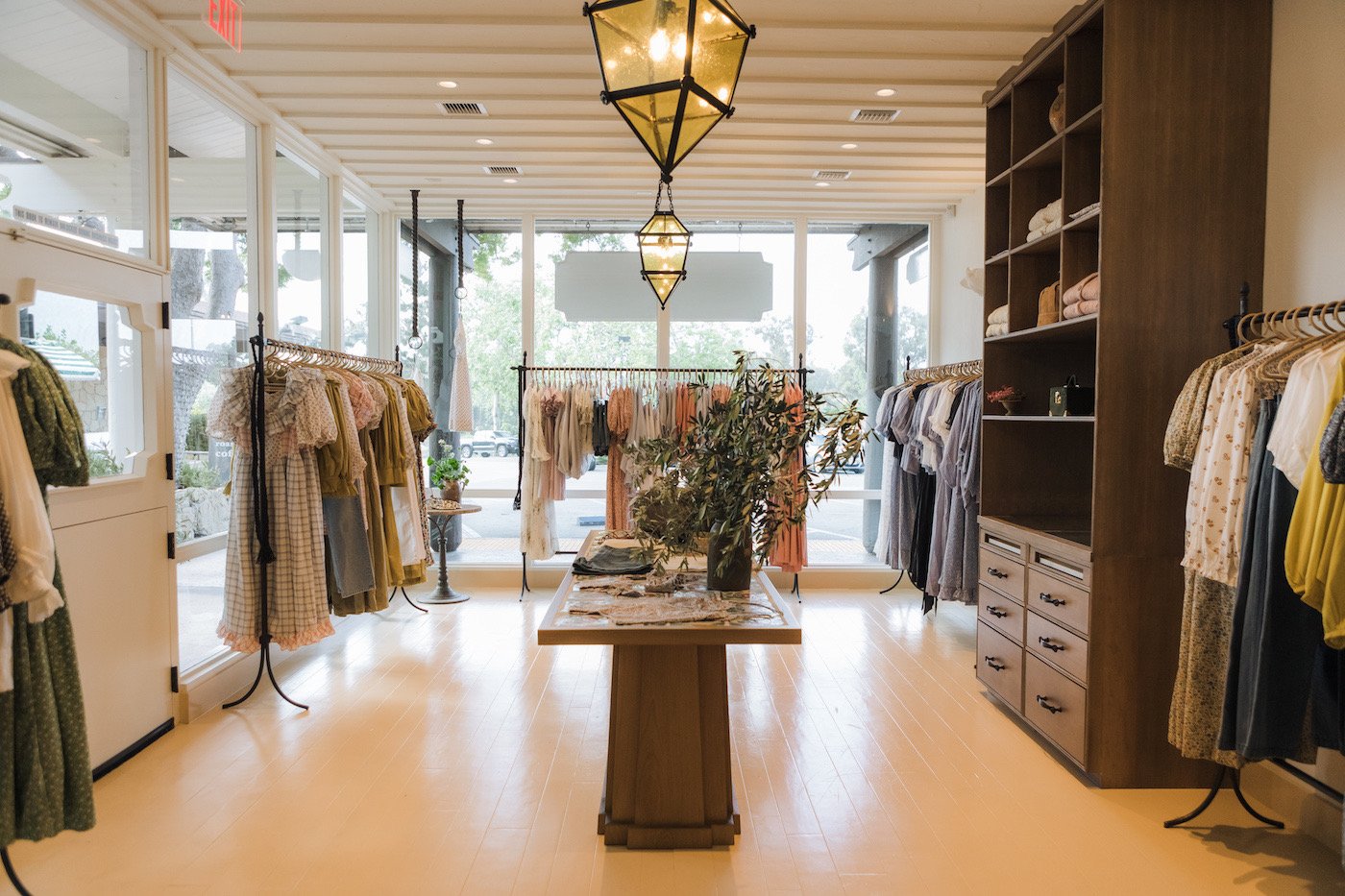The Influence of Social Media on Today's Boutique Fashion Trends
Wiki Article
Lasting Fashion: Exactly How Eco-Friendly Clothing Is Shaping the Future of Style
As the fashion sector deals with increasing analysis over its environmental influence, the surge of sustainable fashion supplies an appealing choice that aligns design with ecological duty. boutique fashion. How does this movement really influence the future trajectory of style, and what obstacles exist in advance in its widespread adoption?Ingenious Lasting Materials
As the fashion industry grapples with its ecological influence, ingenious lasting products have actually emerged as a critical option for reducing environmental footprints. These materials not just decrease dependence on fossil fuels yet also lessen hazardous pesticide usage and water consumption.In enhancement to plant-based materials, innovations in biofabrication have caused the advancement of lab-grown fabrics. Mycelium natural leather, originated from mushroom roots, offers a functional and eco-friendly option to animal natural leather. Its manufacturing causes considerably reduced carbon emissions and water usage, making it a more lasting alternative for designer seeking to align with environmentally friendly practices.
Recycled materials are likewise getting traction, with polyester made from recycled plastic containers standing for a considerable innovation. This technology not only draws away plastic waste from landfills and oceans but additionally lowers power intake contrasted to generating virgin polyester. Together, these products underscore the potential for a much more lasting garment industry, leading the way for environmentally conscious layout and manufacturing.
Eco-Conscious Production
Building on the developments in lasting products, the style industry is also re-evaluating its manufacturing processes to better minimize environmental impact. Trick methods consist of reducing water intake, decreasing carbon exhausts, and eliminating harmful chemicals.An additional important facet is the decrease of poisonous chemicals commonly made use of in dyeing and ending up textiles. Eco-conscious suppliers are changing in the direction of plant-based dyes and waterless dyeing technologies, which not just guard neighborhood ecosystems yet likewise improve worker safety and security. Developments like electronic printing lower material waste and energy consumption, supplying a cleaner alternative to standard techniques.
With the improvement of blockchain technology, firms can now supply thorough understandings right into their supply chains, making sure ecologically friendly and honest techniques at each step. As the demand for eco-conscious products grows, makers are forced to introduce, making sure that the future of fashion is both sustainable and fashionable.
The Rise of Upcycling
Upcycling, a transformative method in sustainable fashion, entails artistically repurposing disposed of materials right into new, premium items. This ingenious strategy not only minimizes waste but also diminishes the demand for resources, thereby lessening the ecological influence of apparel manufacturing. By reimagining and reconstructing existing products, designers and fashion brand names are able to infuse creativity right into their collections while promoting ecological duty.
In addition, the upcycling motion has encouraged local business and independent developers, that usually lead in innovation because of their dexterity and creativity. By maximizing the bountiful accessibility of extra products, these entities contribute to a circular economic climate, demonstrating that fashion can be both sustainable and elegant. Via upcycling, the sector takes considerable strides official statement towards an extra responsible and conscious future.
Thrift Society's Impact
The blossoming thrift society significantly reshapes the landscape of lasting style, highlighting the importance of conscious consumption. This cultural shift encourages customers to welcome secondhand clothes, therefore reducing the demand for brand-new garment production and lessening environmental influence. Second hand shopping not just extends the lifecycle of clothes however additionally lowers the carbon footprint related to production, transporting, and disposing of clothing.A vital facet of second hand culture is its democratization of style. By providing a wide selection of styles from numerous periods at affordable rates, thrift shops make fashion available to a broader target market. This availability promotes a feeling of originality and creative thinking, as consumers mix and match unique items to curate customized closets without adding to the rapid style cycle.
Furthermore, thrift culture advertises circularity in vogue, lining up with the principles of a circular economy. By recirculating garments, the cycle of waste is disrupted, and resources are preserved. This practice sustains a change from a direct "take-make-dispose" version to a much more sustainable structure. As even more customers and developers accept second hand society, the fashion business is obliged to adjust, incorporating lasting methods to meet the growing need for eco-conscious options.

Future Trends in Fashion
Style's advancement is significantly formed by technological advancements and sustainability-driven initiatives. One noticeable fad is the increase of digital style, where virtual garments can be put on in enhanced fact settings, dramatically lowering textile waste.In addition, the combination of blockchain technology uses new possibilities in transparency and traceability, allowing consumers to confirm the sustainability credentials of their clothes. boutique fashion. This ensures liability in supply chains and advertises honest sourcing methods. 3D printing is yet one more development that promises to transform manufacturing processes by enabling on-demand production, therefore reducing excess supply and waste
As these innovations develop, they are poised to a fantastic read transform the style landscape, merging design with sustainability. The future of style, therefore, exists in a smooth mix of innovation, innovation, and ecological obligation.
Verdict
The improvement of the fashion industry via lasting techniques indicates a crucial change towards ecological liability. This development not just lines up fashion with environmental sustainability but likewise establishes a criterion for future fads concentrated on obligation and development.As the fashion market encounters enhancing examination over its environmental effect, the increase of sustainable fashion supplies an encouraging option that lines up style with eco-friendly responsibility.As the style sector grapples with its ecological effect, innovative lasting materials have emerged as an essential remedy for minimizing ecological footprints. Together, these materials highlight the capacity for a more lasting style sector, paving the means for ecologically conscious style and production.
Building on the developments in lasting materials, the fashion industry is also re-evaluating its manufacturing processes to additionally decrease environmental impact. boutique fashion.Upcycling, a transformative practice in lasting style, entails creatively repurposing discarded products into new, top notch products
Report this wiki page